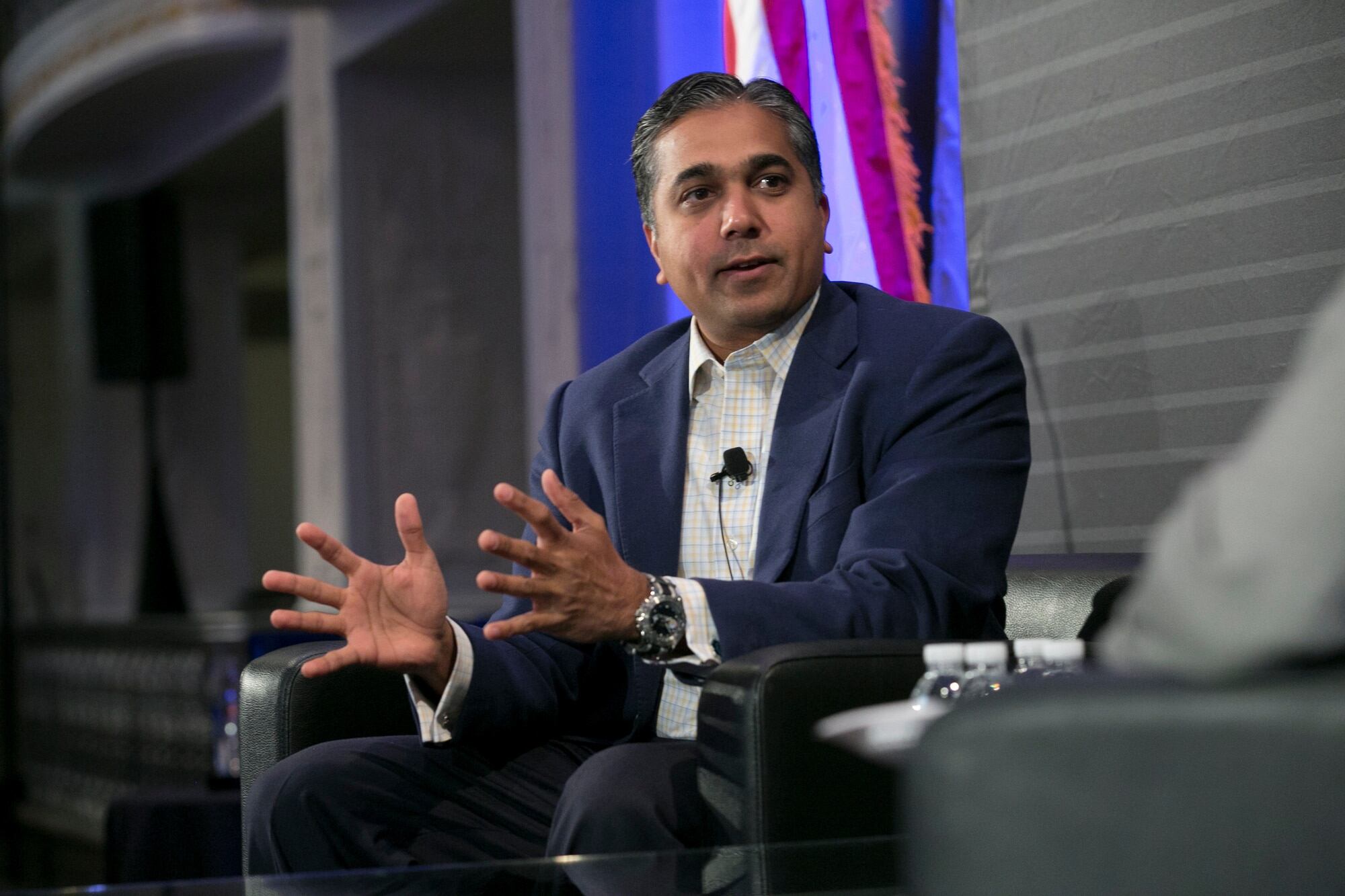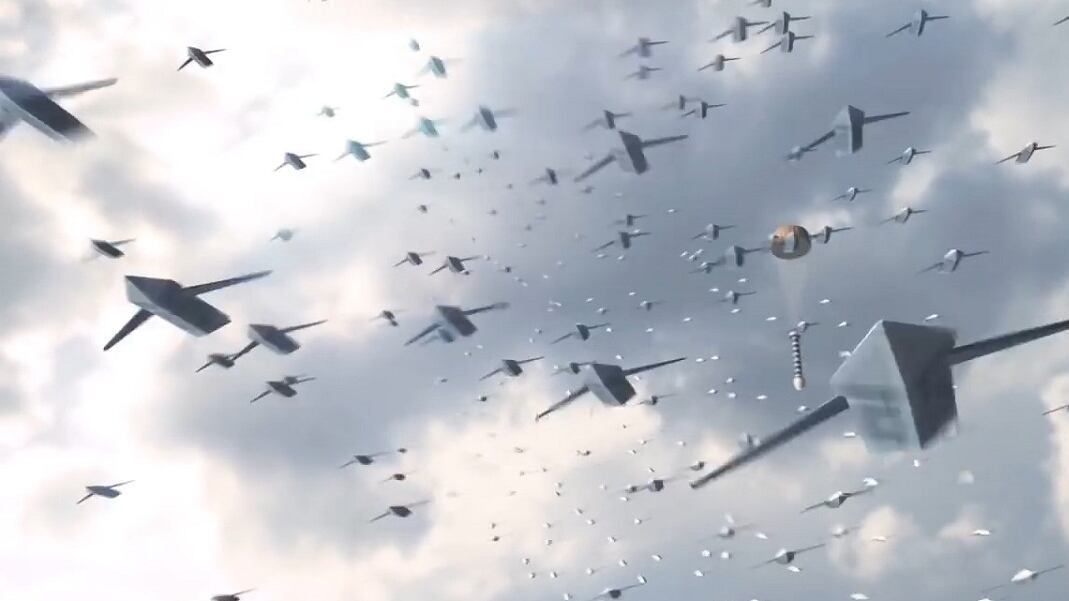WASHINGTON ― Defense innovation experts told U.S. lawmakers on Wednesday that if they truly want the Department of Defense to embrace the leap-ahead technologies needed to compete, Congress must use its funding power to make major players out of small, disruptive tech firms.
The leaders of the U.S. House’s Future of Defense Task Force, which hosted the testimony, said they are willing to challenge the tough politics of displacing older systems that have built-in constituencies with the technologies troops will need. The panel’s co-chairs Reps. Seth Moulton, D-Mass., and Jim Banks, R-Ind., are expected to issue recommendations to that end in the coming weeks.
“We understand that makes some of our colleagues nervous, but that’s the big picture of what we’re trying to accomplish ― publishing a report that will be taken seriously by our colleagues that addresses the type of disruption that’s needed at the Pentagon to foster innovation,” Banks told reporters after the hearing. “If it’s a tit for tat, then we have to address legacy systems, sacred cows that can be compromised for the greater good."
The task force, launched in October, focuses on maintaining the Pentagon’s technological edge against Russia and China.
The hearing Wednesday, titled “Supercharging the Innovation Base,” hosted Aerospace Industries Association CEO Eric Fanning, whose members are largely established prime contractors and major subcontractors; Raj Shah, the former chief of DoD’s Defense Innovation Unit, now with Arceo.ai; and Chris Brose, a former staff director for the Senate Armed Services Committee, now head of strategy for tech startup Anduril Industries.

The hearing came as the Pentagon is working to absorb Congress’ latest round of acquisitions reforms and eyeing advances in artificial intelligence, hypersonic weapons, biotechnology and next-generation networking, known as 5G. Senior Pentagon leaders are themselves fundamentally rethinking DoD’s modernization priorities, but the proof will be in the president’s FY21 budget submission next week and future budgets.
“I think it’s very difficult when the public pronouncements and the follow through on the acquisition side are at odds,” Shah said. “There has been no shortage of senior leaders who come to [Silicon] Valley and say, ‘We want this innovation, we love it.’ But then when it comes time to fund relatively modest contract sizes, they say, ‘Look, we love AI but we can’t find $20 million for this project. The advantage DoD has is scale, and it should use it to maximize its value.”
Asked by Rep. Paul Mitchell, R-Mich., about the Army’s decision to scrap its procurement strategy for the optionally-manned fighting vehicle ― a move that fueled questions about whether the program requirements were unrealistic ― Brose said DoD too often treats requirements as “a one-way street.” DoD asks industry to build exactly what it wants, he said, instead of being open to being surprised by what innovative firms can do.
Along these lines, Brose argued the military needs to inject competition into programs, but also devote resources toward competitive experiments, driven by outcome-oriented metrics, that can in turn drive innovative operational concepts.
“Winning a program of record can’t be like getting tenure at a university, where you have it and forever it’s yours. Every year or so you have to find a way for a new company to come in and take a swing at the incumbent ... telling the incumbent, ‘You’ll have another chance in a year or two, bring your A-game,’” Brose said.
Brose and Shah said the Pentagon ought to be investing in what it deems the most promising products and firms instead of spreading around small seed investments that rarely result in a recurring revenue stream for a tech company. Brose also recommended that in helping innovative firms displace “established but less capable programs of record,” the government should, “buy more of what that innovation base is building right now.

The government’s decision-making will drive private-sector investors toward winning companies that need to scale up to meet demand, Shah said. As it stands, DoD’s slow processes create a “valley of death” from experimentation to production that denies small and mid-tier companies the revenue they need to thrive.
“Be willing to make big bets on early indicators of success. There are lots of these trial programs ... Pick two or three that are promising. Bet big on them on watch them thrive,” Shah said, adding later: “Venture capitalists are in the business of maximizing return. You don’t need to engage them, you don’t even need to call them. If you make bets on companies that you think will be decisive for national security, they will follow―at least the good ones. That is their job.”
Beyond products, outreach-focused organizations and activities like the Defense Innovation Unit, the Defense Digital Service and Air Force Pitch Day need heftier funding as well, according to Shah. He recommended Congress also fund U.S. military installations in each of the country’s leading innovation centers, including San Francisco and Boston, “to build personal, community relationships between technologists and uniformed members.”
Where should Congress cut and reinvest? Brose argued against investing in robust command and control networks that pipe data from the battlefield to far-away processing centers. Because troops will likely face network-denied environments, they would be better off with distributed, semi-autonomous battlefield systems capable of processing vast amounts of data onsite.
“The model we’ve built our military on is fundamentally going to have to change,” Brose said. “It’s been centralized so information at the edge is brought back to the center, generally in highly manual processes, to make sense of it and push it out. I think we’re going to have to do this in a distributed way, not least because our adversaries have figured out how we fight and they are building weapons to cripple and shatter our ability to command and control our forces.”
Asked what programs ought to be displaced by these innovative technologies, Fanning acknowledged that when those sorts of decisions get made, “the antibodies come out.” He argued that industry, Congress and DoD ought to be making decisions in collaboration with one another.
“If we think, and the existence of this panel makes me think we do, we’re going to make some pivots, we need to find a way to support the department when it’s trying to make some of the hard choices,” Fanning said.
Joe Gould was the senior Pentagon reporter for Defense News, covering the intersection of national security policy, politics and the defense industry. He had previously served as Congress reporter.




